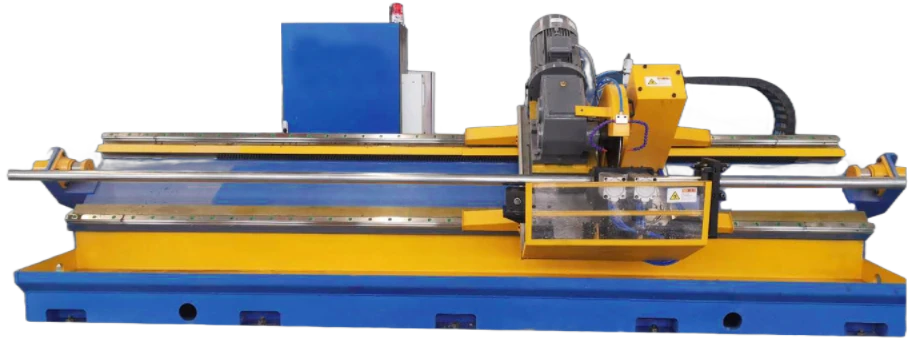Angle Roll Forming Equipment for Precision Metal Bending and Shaping Solutions
Understanding Angle Roll Forming Machines
Angle roll forming machines play a crucial role in the metal fabrication industry, specifically in shaping and forming metal into precise angles. These machines are instrumental in creating products such as structural steel components, metal framing, and various other applications requiring angular profiles. This article explores the significance, operation, and advantages of angle roll forming machines.
What is Angle Roll Forming?
Angle roll forming, also known as angle bending or roll bending, involves the process of bending and shaping metal sections into specific angles to meet design specifications. The machine itself utilizes three roll sets to achieve this, allowing for excellent control over the bending process and enabling manufacturers to create both standard and custom profiles. The versatility of angle roll forming machines makes them ideal for producing a variety of shapes and sizes.
Components of Angle Roll Forming Machines
An angle roll forming machine typically consists of three main rolls that are positioned in a triangular configuration. Each roll serves a unique purpose
1. Top Roll The top roll is adjustable and is crucial for controlling the bend radius and angle. It exerts pressure on the metal being formed. 2. Bottom Rolls The bottom rolls provide support and stability to the metal as it is fed through the machine. They can also be adjusted to achieve different bending angles.
Additionally, these machines often include hydraulic or electric systems to enhance the ease of operation and ensure precise bends. Advanced electronic controls and programmable settings offer added convenience, allowing operators to streamline production processes.
The Working Process
The operation of an angle roll forming machine begins with the feeding of the metal section into the machine. As the operator sets the desired specifications, the top roll descends to apply pressure while the bottom rolls are adjusted to guide the metal through the bending process. By continuously rotating the rolls, the machine gradually shapes the metal into the specified angle.
angle roll forming machine

One of the advantages of angle roll forming is its ability to produce consistent, repeatable results. Once set, the machine can produce multiple units with identical specifications, reducing waste and enhancing efficiency.
Advantages of Angle Roll Forming Machines
Investing in angle roll forming machines brings numerous benefits to manufacturers, including
1. Precision and Accuracy These machines create precise angles and consistent profiles, crucial for structural applications where exact specifications are required. 2. Versatility Angle roll forming machines can handle a variety of materials, including steel, aluminum, and other metals, making them suitable for a wide range of industries, from construction to automotive.
3. Efficiency The ability to produce large quantities of products in a short amount of time enhances productivity and reduces manufacturing costs. Automated systems and advanced controls further streamline the process.
4. Reduced Material Waste The precision of the bending process minimizes the risk of defects and waste, leading to cost savings in material expenses.
5. Custom Solutions Many angle roll forming machines can be customized to suit specific production needs, accommodating unique designs and requirements.
Conclusion
Angle roll forming machines are essential tools in the metalworking industry, enabling the efficient and precise production of angular metal profiles. Their ability to create consistent, high-quality components while reducing waste and increasing productivity makes them invaluable for manufacturers. As technology continues to evolve, these machines will only become more sophisticated, enhancing their capabilities and solidifying their role in modern fabrication processes. Adopting angle roll forming technology could thus be a strategic move for businesses looking to expand their manufacturing capabilities and improve overall efficiency.
-
High Frequency Straight Seam Welded Pipe Production Line-BzZhou Xinghua Machinery Equipment Manufacturing Co., LTD.|Precision Welding, High EfficiencyNewsJul.30,2025
-
High Frequency Straight Seam Welded Pipe Production Line|BzZhou Xinghua|Precision Welding&EfficiencyNewsJul.30,2025
-
High Frequency Straight Seam Welded Pipe Production Line - BzZhou Xinghua|Precision Engineering&EfficiencyNewsJul.30,2025
-
High-Frequency Straight Seam Welded Pipe Production Line-BzZhou Xinghua Machinery Equipment Manufacturing Co., LTD.NewsJul.30,2025
-
High-Frequency Straight Seam Welded Pipe Production Line-BzZhou Xinghua Machinery Equipment Manufacturing Co., LTD.|Precision Manufacturing, High EfficiencyNewsJul.30,2025
-
High Frequency Straight Seam Welded Pipe Production Line-BzZhou Xinghua Machinery Equipment Manufacturing Co., LTD.|Precision Steel Pipe Manufacturing&Industrial EfficiencyNewsJul.29,2025


